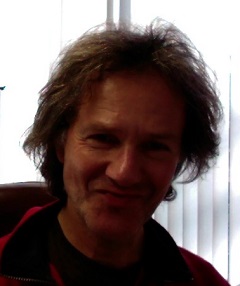
Plenary Lecture 1
The dominant effect of biomass burning activities on PM2.5 oxidative potential in a background site of Milan metropolitan area.

Professor Constantinos Sioutas
Sc.D. Fred Champion Professor Department of Civil & Environmental Engineering
University of Southern California, 3620 South Vermont Avenue Los Angeles, USA
Tel: (213)- 740 - 6134
Fax : (213)- 744- 1426
USC Aerosol Group
Website: www.usc.edu/aeroso
Email: sioutas@usc.edu
Abstract: In the present study, we investigated the contribution of biomass burning emissions to the oxidative potential of PM2.5 in northern Italy. The PM2.5 sampling campaign was conducted during December 2018–February 2019 (i.e., cold season) and May 2019–July 2019 (i.e., warm season) at the small town of Bareggio, located 14 km away from the Milan central area. Collected samples of PM2.5 was analyzed for the chemical composition as well as oxidative potential via dithiothreitol (DTT) assay. Ambient PM2.5 mass concentration during the cold season (71.82 ± 4.17 μg/m3) was significantly higher than warm season (16.67 ± 0.27 μg/m3) due to the high atmospheric stability and biomass burning activities during the cold season. Furthermore, polycyclic aromatic hydrocarbons (PAHs) mass concentrations during the cold season (72.81 ± 16.59 ng/m3) demonstrated an approximately 150 times increase with respect to the warm season (0.40 ± 0.07 ng/m3), mainly attributed to high biomass burning activities during the cold season judging by high correlation between PAHs and biomass burning biomarkers. The Spearman correlation analysis between PM2.5 oxidative potential and chemical biomarkers of different sources demonstrated high contribution of summer-time secondary organic aerosols (SOA) and vehicular activities as well as winter-time biomass burning, vehicular emissions, and re-suspended road dust to PM2.5 oxidative potential. Then, multiple linear regression (MLR) analysis demonstrated the dominancy of biomass burning (41%) to the PM2.5 oxidative potential throughout the year, followed by SOA, re-suspended road dust, and vehicular emissions, with corresponding contributions of 20%, 18%, and 16%, respectively. This study revealed the dominant role of biomass burning activities on the oxidative potential of PM2.5 in Milan metropolitan area which requires authorities to conduct effective strategies to mitigate the source specific emissions.
Brief Biography of the Speaker: Professor Sioutas is the Co-Director of the USC particle center (SCPC), established by US EPA in late 1999. His research area includes developing technologies for measuring the physico-chemical characteristic of air pollutants, with a focus on particular matter (PM) and their corresponding health effects. He started his academic career at the Harvard School of Public health in 1995. He has published more than 300 peer-reviewed journal publications, and holds 14 U.S. patents in the field of aerosol instrumentation.
Presenting author details: Constantinos Sioutas, Sc. D. Department of Civil and Environmental Engineering, University of Southern California 3620 South Vermont Avenue, Los Angeles, CA 90089, USA Tel: (213)-740-6134 Fax: (213)-744-1426 USC Aerosol Group Website: www.udc.edu/aerosol Category: Oral presentation